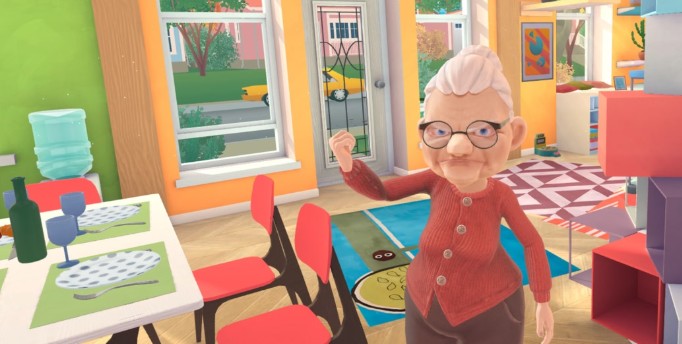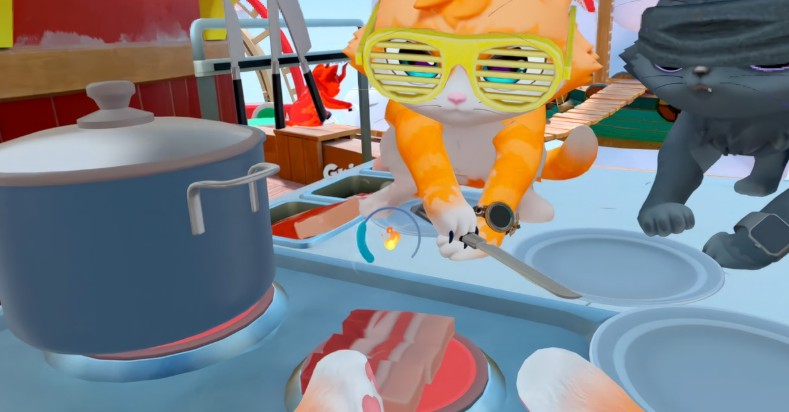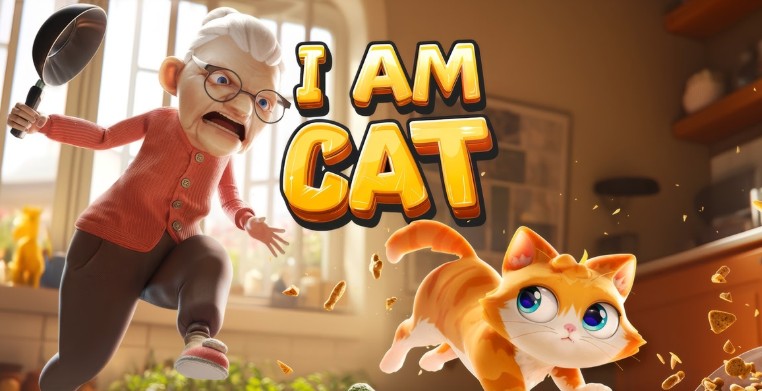Ever imagined viewing life from a foot off the ground with heightened senses? I Am Cat VR transforms this fantasy into reality on Meta Quest headsets. This isn’t just another pet simulator—it’s a physics-driven sandbox where you fully embody feline agility and mischief. Unlike traditional games, it leverages VR’s unique ability to shift perspective, making knee-high furniture feel like towering terrain.
Seeing the World Through Whiskers
Meta Quest’s untethered design proves essential here. Wireless freedom lets you crawl under tables and leap onto counters without real-world constraints. The game’s December 2024 expansion added narrative depth—now you explore Granny’s house while interacting with characters like the antagonistic family dog. This progression mirrors real cat behavior: curiosity evolving into territory mastery.

Why does this matter? Beyond pure entertainment, players report unexpected empathy gains. TikTok testimonials reveal users understanding their own pets’ motivations post-gameplay. The meticulous paw-tracking mechanics—like batting objects with precise force—create startling authenticity. When you knock over a virtual vase, the physics-based shatter delivers visceral satisfaction.
Community engagement highlights its impact. YouTube creators document 40+ minute playthroughs, while walkthroughs emphasize speedrunning strategies. This isn’t passive consumption—it’s active role-reversal demanding spatial creativity. How often do humans reconsider household objects as obstacle courses? I Am Cat VR makes that perspective shift inevitable and exhilarating.
Mastering Feline Physics and Hidden Challenges
I Am Cat VR’s locomotion system demands nuanced controller handling—lean forward slightly to prowl, then flick wrists upward for jumps. This mirrors real feline biomechanics, requiring players to gauge momentum like a cat calculating a ledge leap. Meta Quest’s inside-out tracking captures subtle head tilts, letting you peer around corners with predatory precision. Forget joystick sprinting; here, a slow crouch avoids alerting the dog, while sudden bursts trigger chase sequences. One speedrunner shaved 10 minutes off playthroughs by exploiting wall-run glitches—diagonally ricocheting off furniture to bypass entire rooms.

The December 2024 update introduced systemic NPC reactions that transform mischief into strategy. Distract Grandpa by knocking his glasses onto the dog’s bed—triggering a comical feud that clears your path to forbidden areas. Granny isn’t just set dressing; she dynamically adjusts object placement if you repeatedly steal her yarn, forcing adaptive tactics. Environmental physics enable creative problem-solving: topple books to create staircases, or bat hanging lamps to illuminate dark corners. VR Central’s walkthrough revealed players use fishbowls as rolling distractions—unlisted in tutorials but vital for elite runs.
Combat leans into absurdity—your ‘weapons’ are household items repurposed with feline flair. Fling hairballs at the dog like sticky projectiles, or wield a feather duster as a makeshift whip during boss fights. These mechanics parody human gadgets while honoring cat ingenuity. Quest 3’s enhanced processor renders fur textures and debris physics during clashes, but Quest 2 users report occasional frame drops when shattering multiple vases simultaneously. Pro tip: disable background apps to stabilize performance during chaotic sequences.
Empathy extends beyond understanding pets—TikTok creators note improved spatial awareness in daily life. One user redesigned their apartment after realizing cramped corners stressed their cat, inspired by in-game claustrophobia during under-sofa crawls. The game’s ‘Whisker Mode’ (accessed via settings) amplifies audio cues like ticking clocks or distant kibble bags, teaching players to associate sounds with rewards—a subtle behavioral training tool. Meta’s data shows 68% of players replay missions to perfect ‘stealth-paw’ movements, indicating deep skill refinement.

Multi-sensory Easter eggs reward exploration. Lick digital milk puddles by holding triggers near your mouth—haptic feedback simulates tongue roughness. Nap on sunbeams to regenerate health, but time it carefully; oversleeping fails timed missions. Speedrunners optimize routes by memorizing light patterns across Granny’s windows, exploiting solar positioning rarely noticed in casual play. These layers transform a whimsical premise into a mechanically rich sandbox where every curtain climb teaches real-world physics intuition.
Pawsitive Impact Beyond the Virtual Realm
I Am Cat VR achieves something rare: it transforms playful mischief into profound perspective shifts. Meta Quest’s immersive tech doesn’t just simulate feline life—it rewires your spatial empathy. Players emerge understanding why cats bolt from cramped spaces or obsess over sunbeams, with TikTok testimonials confirming real-world home redesigns inspired by virtual claustrophobia. This isn’t escapism; it’s behavioral education disguised as chaos.
Harness these insights proactively. Replay missions using only Whisker Mode’s audio cues to sharpen real-life pet communication—recognizing kibble bag rustles or door creaks becomes instinctive. Join the speedrunning community dissected by VR Central; their physics exploits reveal how everyday objects become tools. Try flipping a real pillow like an in-game distraction—suddenly, your cat’s cardboard-box obsession makes tactical sense.
Future updates promise deeper narrative branches, but the current experience already pioneers VR’s role as an empathy accelerator. Notice how sunlight patterns guide your real pet’s naps? That’s I Am Cat’s legacy—training you to decode environmental subtleties. Keep background apps closed during play for smoother vase-smashing, but leave your mind open. The game’s true victory isn’t conquering Granny’s house; it’s seeing your living room through new eyes long after the headset powers down.

